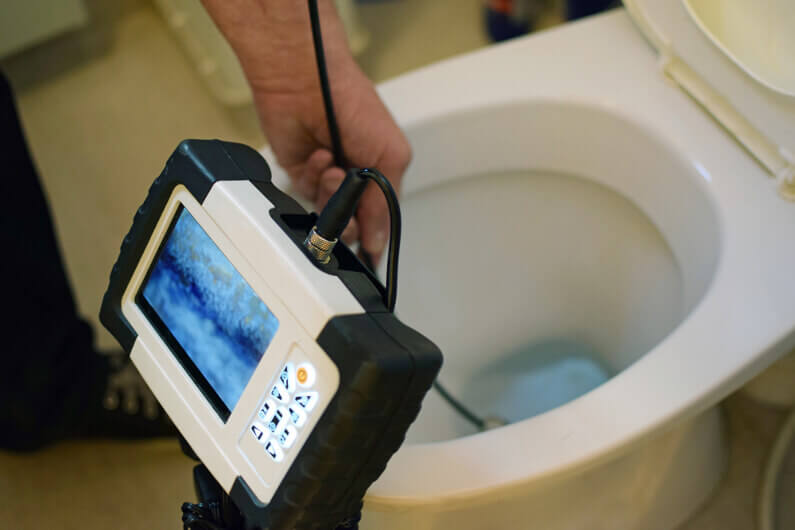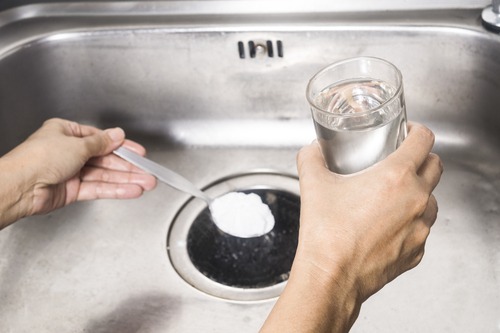Are you currently in search of information and facts about What I learned from trying to deal with a clogged drain?

Intro
Managing a blocked drain can be a discouraging experience, interfering with everyday activities and potentially triggering damage to your home. Nonetheless, before reaching out to plumbing professionals, there are steps you can require to resolve the issue yourself. In this guide, we'll explore DIY solutions and safety nets to take on an obstructed drainpipe successfully.
Identifying the Concern
The primary step in dealing with an obstructed drainpipe is recognizing the indicators. Slow drain, gurgling audios, foul odors emanating from drains, or water backing up prevail indications of a blocked drain. Identifying these indications early can aid prevent further complications.
Picking the Right Pipes Solution
When selecting a plumbing solution, think about aspects such as experience, licensing, and consumer evaluations. Pick a credible plumbing with a performance history of top quality handiwork and clear pricing techniques.
Cost Factors to consider
The price of expert drain cleaning services can vary depending on the intensity of the clog and the plumbing's prices. Demand quotes from several service providers and inquire about any kind of surcharges to ensure transparency and prevent surprises.
Safety and security Measures
When trying DIY drain cleaning, focus on safety. Wear safety gloves and eyewear to prevent contact with unsafe chemicals or bacteria. Never mix various drain cleaning products, as this can create harmful fumes.
Situation Researches
Real-life instances highlight the performance of do it yourself solutions and the importance of prompt specialist intervention in resolving drainpipe obstructions.
Typical Causes of Obstructed Drains
Understanding the factors that add to drain clogs is important for reliable resolution. Common wrongdoers include hair, soap residue, oil, food debris, and foreign things like hygienic products or paper towels. Tree origins getting into below ground pipelines can additionally trigger substantial clogs.
Do it yourself Solutions
For minor blockages, several do it yourself options can be efficient. Putting boiling water down the drain can aid dissolve grease and debris. Sodium bicarbonate and vinegar or a combination of salt and baking soda can act as all-natural cleansers. Utilizing a bettor or pipes snake to remove blockages is another choice.
Devices and Tools
Having the right tools available can make DIY drainpipe cleansing more efficient. A plunger is a flexible device for removing blockages in sinks, toilets, and showers. A plumbing serpent or auger can get to deeper clogs, while drainpipe cleaning chemicals can be used cautiously for persistent obstructions.
Preventive Measures
To prevent future blockages, taking on preventive measures is important. Install drainpipe guards or strainers to capture hair and debris prior to they get in the pipes. Regularly flush drains with hot water to dissolve grease buildup, and stay clear of throwing away oil or solid waste down the tubes.
When to Call an Expert
While DIY solutions can resolve small obstructions, specific signs indicate the demand for professional support. Consistent obstructions, foul odors despite cleaning up efforts, or numerous drains pipes supporting simultaneously are warnings that call for professional intervention.
Final thought
By following the pointers laid out in this overview, you can properly tackle obstructed drains and stop future plumbing problems. Whether opting for DIY options or looking for specialist help, timely action is essential to maintaining a healthy pipes system and protecting the stability of your home.
How to Clear a Clogged Drain Yourself (And When to Call In the Professionals)
What Can Clog a Drain
Dirt Skin flakes Hair Grease Soap scum Food Offset pipes Tree roots Small objects Mineral buildup DIY Tricks to Unclog a Drain
You can fix this! Once you have identified the source of the clog (or have a vague idea), you can try one or a combination of these fixes in order to clear your plumbing.
Wire Hanger or Snake
Untangle and clear out hair from a drainpipe with a homemade snake. Use a straightened-out wire hanger with a 90-degree angle hook to locate the clog and drag out any unwanted material.
Remember not to push the clog further down to where the wire hanger cannot reach! If you need to follow up with a plunger, give it a try. Your efforts might be more successful after it’s been wire-snaked.
If you want to get fancy and don’t have a wire hanger to spare, head to the store and pick up a hand-operated drain snake. You can get one for $10-$30. It may save you the hassle, and provide additional length to reach deep into the clogged pipe.
Plunger
A cup plunger has a suction cup attached to a wooden handle. The rubber creates a seal around the drain, and increases the pressure force of the plunger.
Plunge for 30-second increments to loosen the clog. This may need to be repeated over the course of 15-20 minutes. Once plunged, run the water to flush the remaining material out of the drain.
Remember– never use a plunger if you have used a chemical drain cleaner. These chemicals can splash up from the force of the plunger and cause serious injury or burns.
Boiling Water
Hot water can sometimes break up materials into a flushable amount. Dirt, grease, and soap buildup requires heat in order to unstick from surfaces.
Take your kitchen kettle and heat your water to a boil. Once it reaches a rolling boil, pour it directly down the drain into the blockage. Carefully follow with plunging, if necessary.
Don’t worry if this takes more than one try! It can often take multiple kettles and repeated plunging in order to clear a particularly stubborn clog.
Chemical Drain Cleaner
As a last resort, pick up a bottle of chemical drain cleaner. Drain-cleaning chemicals are potent, and not very good for the environment.
You may need to wear protective eyewear in gloves before handling your bottle of chemical drain cleaner. Follow the instructions printed on the bottle, and flush with water as soon as the instructions allow. Do not follow with plunging.
Baking Soda and Vinegar
As a safer alternative to chemical drain cleaner, baking soda and vinegar can create a chemical reaction that clears tough clogs.
Combine one cup of cleaning vinegar with one cup of boiling water, and set aside. Once you have done this, pour half a cup of baking soda down the drain. Give the baking thirty seconds to settle and cover a large portion of the problem drain.
Following the baking soda, pour down your vinegar and hot water solution. Once the vinegar and baking soda combine, the mixture will bubble and fix. Let this reaction fizzle in the drain for about an hour.
After an hour, follow with a kettle’s worth of hot water. The heat and liquid should flush out any remaining material.
When to Call a Plumber
If your DIY attempts haven’t cleared your clog drain, it’s time to call in a professional. It’s not worth losing access to your kitchen sink or high-traffic bathroom. A clog in a vital area can keep you from the things you’d rather be doing, and derail your routine.
Anytime a clog is causing water to spread is a time to call in a plumbing service. What starts out as a little bit of water can quickly grow into serious, expensive water damage.
Additionally, a serious clog can result in burst pipes or serious leaks. Make sure you know when to take it seriously!
https://myguysnow.com/how-to-clear-a-clogged-drain-yourself-and-when-to-call-in-the-professionals/

I was introduced to that article about 8 Tips For Clearing A Blocked Drain from an associate on another domain. Sharing is caring. You won't know, you could be doing someone a favor. Thank you so much for your time invested reading it.
Call